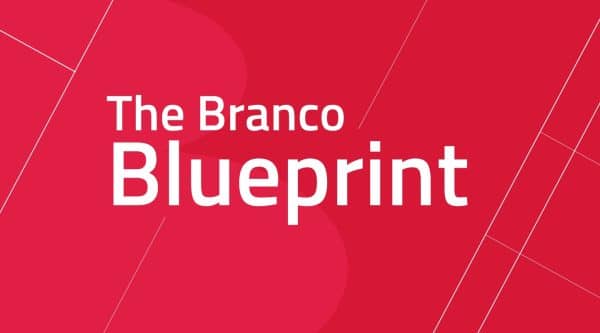Before we spend our days in the summer sun, it’s crucial to have meaningful conversations about the dangers of sun exposure. May is Skin Cancer Awareness Month, with the first Monday dedicated to melanoma awareness.
Skin cancer is the most common cancer diagnosis in the United States, and about 85% of melanoma cases are caused by damaging ultraviolet radiation from the sun. It’s also largely preventable with good sun awareness and protection.
What is melanoma?
Melanoma is a less common but dangerous form of skin cancer that affects the melanocyte cells. These cells are responsible for producing melanin, which creates tan or brown pigment in your skin and acts as a barrier to help protect your skin from the sun.
While not always, melanoma tends to develop in areas that get a lot of sun exposure, like your legs, arms, back, chest, or face, and manifest as a change to a normal mole or a new pigmented growth on your skin.
It’s essential to stay aware of changes to your skin. Melanoma is known to spread quickly to other organs and can become a severe risk to your health in as little as six weeks.
Skin cancer risk for construction workers
More than 5.4 million Americans are diagnosed with skin cancer each year, with around 100,000 of those melanoma cases. Construction workers spend long hours outdoors in the sun. This constant exposure to the sun seriously raises risks of skin cancer in workers who don’t take precautions.
Protecting our workers
At Branco, safety is our first priority. We work hard to foster safe attitudes and protect our workers from the hazards of the industry. We always encourage our workers to utilize safety equipment, look out for one another, and stay aware of potential health hazards.
The same can be said about our outlook on skin cancer prevention.
Sun Exposure Protection Measures in Construction
Our safety director and site superintendents always keep an eye on the news for upcoming storms to protect our workers and stay on schedule in spite of weather delays. But even days that appear mild or pleasant can mean hazardous sun exposure.
So, as part of our overall worker safety plan, the management at Branco pays special attention to the UV Index to inform our crews of enhanced sun exposure risks. Just as we would manage any other safety hazard, we use this information to encourage compliance and positive attitudes towards sun protection control measures.
Sunscreen
Most of us have forgotten sunscreen and later felt the sting of a nasty sunburn. However, it only takes five sunburns to raise your chance of developing melanoma dramatically. It’s important to remember to always apply sunscreen every two hours while working outside.
The best sunscreen to combats harsh UV rays is water-resistant, broad-spectrum with protection against UVA and UVB radiation, and be rated at least SPF 30.
Everyone needs sunscreen in more than just the summer sun. Extended time in the sun, no matter the time of year, can damage your skin. Reflections from shiny surfaces like metal, water, or snow can intensify the UV rays and cause painful sunburns in the dead of winter.
Protective clothing
Protective clothing can reduce sun exposure. Long sleeves that are loosely fitting and tightly woven are best for sun protection. Special fabric, rated using the UPF index (ultraviolet protection factor), not only shields workers from harmful rays but reflects or absorbs the harmful radiation, depending on the color and fabric content.
When workers must spend an extended period of time in the sun, we encourage them to protect their skin by utilizing long sleeves and pants and neck shades, and brimmed hats.
Shade and Physical Controls
When at all possible, the best way to prevent hazardous sun exposure is to limit time spent working in direct sunlight during the most intense parts of the day: generally, from 10 a.m. to 4 p.m. We can achieve this by staggering tasks to encourage more frequent shade breaks and to schedule early start times or evening work.
However, work during the middle of the day isn’t always avoidable. If that’s the case, we can combat additional exposure risk by creating a physical barrier from the sun.
Construction sites tend to lack natural shade options that can give workers much-needed respite from time in the sun. Physical shades like temporary sun barriers and cool-down workers’ tents are extremely valuable during hot summer days to prevent sun exposure and give workers a place to rest and rehydrate to avoid heat stress.
Machinery and vehicle windows can also provide a level of sun protection, not only from their roofs but also by tinting their windows.
Skin cancer prevention
Outside of sun protection, the best thing you can do to manage melanoma and other skin cancer risks is to stay aware of your skin. Check your body frequently for unusual or suddenly different moles and communicate with your doctor immediately if you find an area of concern.
If you have fair skin, freckles, or a history of melanoma, you are at higher risk of developing skin cancer. While genetic testing for mutations isn’t necessary, it’s best to take extra care while working in the sun and establish a good relationship with a dermatologist who can regularly assist you with skin exams.
As we head into summer, we become more aware of the sun as the risk for burning skyrockets. While dangerous UV rays are undoubtedly intense this time of year, sun protection isn’t just a summer concern. We encourage our workers to continue to protect themselves and their families from melanoma and skin cancer by using sunscreen, limiting sun exposure during high-intensity times, and always stay weather aware.


